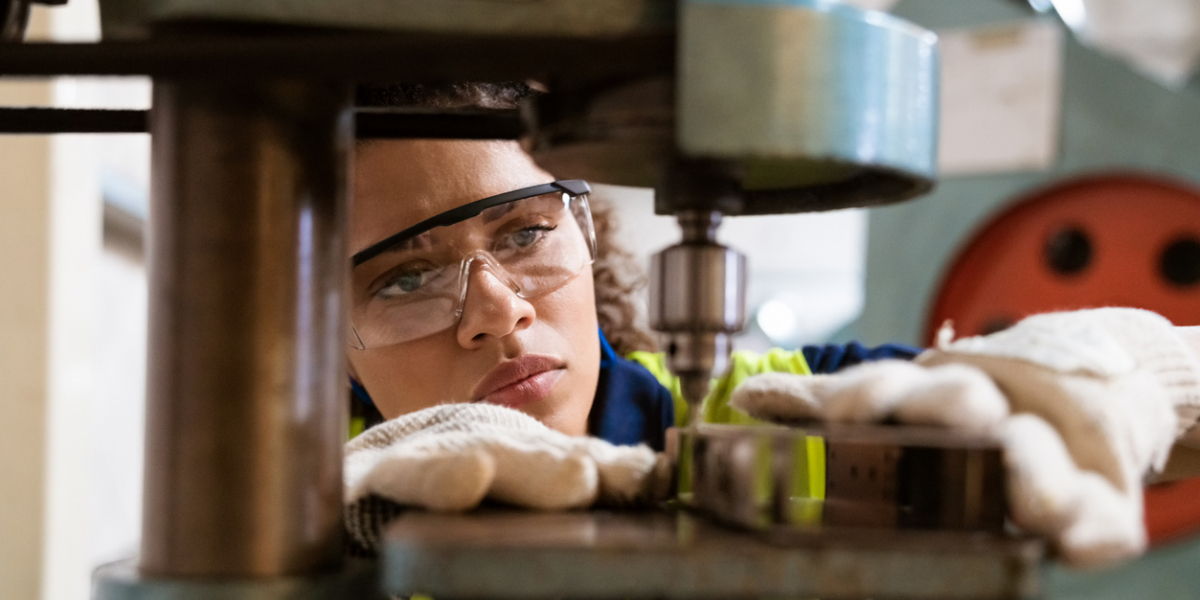
June 6, 2022
By: Teslin Augustine and John McNally
Canadian climate ambition is at record highs. However, to translate this climate ambition into environmental progress and reduce emissions by 40% below 2005 levels by 2030, Canada will need hundreds of thousands of additional skilled workers.
This poses a challenge: Canada’s economy is already facing skilled labour shortages in key sectors where jobs will be created as a result of climate action. Without a trained workforce to advance climate action, clean growth projects in Canada will simply not be built, and no amount of additional capital can change that. Regional, place-based approaches are central to redressing Canada’s skills and labour shortages and for ensuring that communities across the country have the workforce they need to drive clean economic growth.
Canada needs a skilled workforce to build the projects required to reduce greenhouse gas emissions and meet its ambitious climate targets. However, many critical sectors are already experiencing skilled labour shortages today. Over 80% of Canadian manufacturers have reported facing labour shortages and in Ontario alone, there is a shortfall of about 100,000 workers in the construction sector. Filling skilled labour gaps to support the development of climate-friendly projects requires Canada to navigate three core challenges:
First, despite best efforts, it is impossible to accurately predict the specific sectors or professions where skilled labour will be most in demand in the future. Canada’s export-oriented economy is closely connected to global value chains, and our economic success is largely based on the growth of specific niches we occupy within these value-chains. Future drivers of clean economic growth will likely come from highly specialized sub-sectors that are part of larger global value chains, making national-level predictions of future labour and skills needs imperfect.
Second, skills needs within and across sub-sectors will differ dramatically. One example is hydrogen. There are multiple technology options for production, transportation, distribution, and end-use applications, meaning that the skills needed in one province’s hydrogen sector may differ from others. The potential for regional differences makes provincial and regional policies better positioned to support the success of a given workforce as well as realize strategic clean growth opportunities such as hydrogen, manufacturing zero-emissions vehicles, and mining and processing critical minerals.
Third, given global skilled labour shortages, regions across the country will need to attract and retain the workforce they need to drive regional clean economic growth. They will need to do this while taking broader factors into account. Factors like an aging workforce, industrial decarbonization, and the pace of automation will affect the future labour market; but so will housing affordability, socio-demographics, and inter-provincial trade barriers. The intersection of these factors will play out differently from region to region, and the cumulative impacts of these changes will be what shapes a given region’s clean growth narrative. Skilled labour policies will need to be tailored to the specific barriers workers are facing in one particular region to be effective or they risk targeting the wrong barriers and potentially making existing problems worse.
When considering how best to navigate these challenges, it is important to recognize that a one-size-fits-all approach may not be overly useful. Uniform, top-down approaches are limited in what they can offer to a given region’s worker shortfall challenges since each region’s story is different. Housing affordability, for example, which influences the overall attractiveness of a region for a skilled worker, would vary vastly between regions in Ontario versus Alberta. Pace of automation will depend on the economic activity in question and will also vary regionally. In other communities - Atlantic Canada, Quebec, Canada’s North and Indigenous communities, to name only a few - the dynamics will be different still. Designing policies that focus on local barriers to skilled labour shortages will be critical to targeting and redressing the challenges being experienced in different communities.
Skills and labour policies should combine the work done thus far with a different approach: one that centers policy conversations around the regions and communities experiencing and advancing all of this change. Place-based policy approaches are a way to think about designing policies to ensure decision-making takes into account local values, intentions, context, assets, and knowledge. They can ensure policy solutions are developed around the understanding that universities, colleges, trade schools, and apprenticeship programs in a given region play a crucial role in equipping the skilled workforce to advance economic growth, and help companies fill job openings. In practice, this means designing policies and programs that assume geography matters and that not every region or community is the same.
Place-based thinking represents an opportunity to complement the broad suite of market-based approaches with new approaches that are based in communities, built within their context, and advance the change communities want to see to the problems they identify. Smart Prosperity Institute’s new partnership with Future Skills Centre is an opportunity to dive into place-based perspectives on advancing clean growth, meeting climate targets, and redressing skilled labour shortages in Canada. As ambition translates into practice, Canada has an opportunity to help its companies and communities thrive in the decade to come.